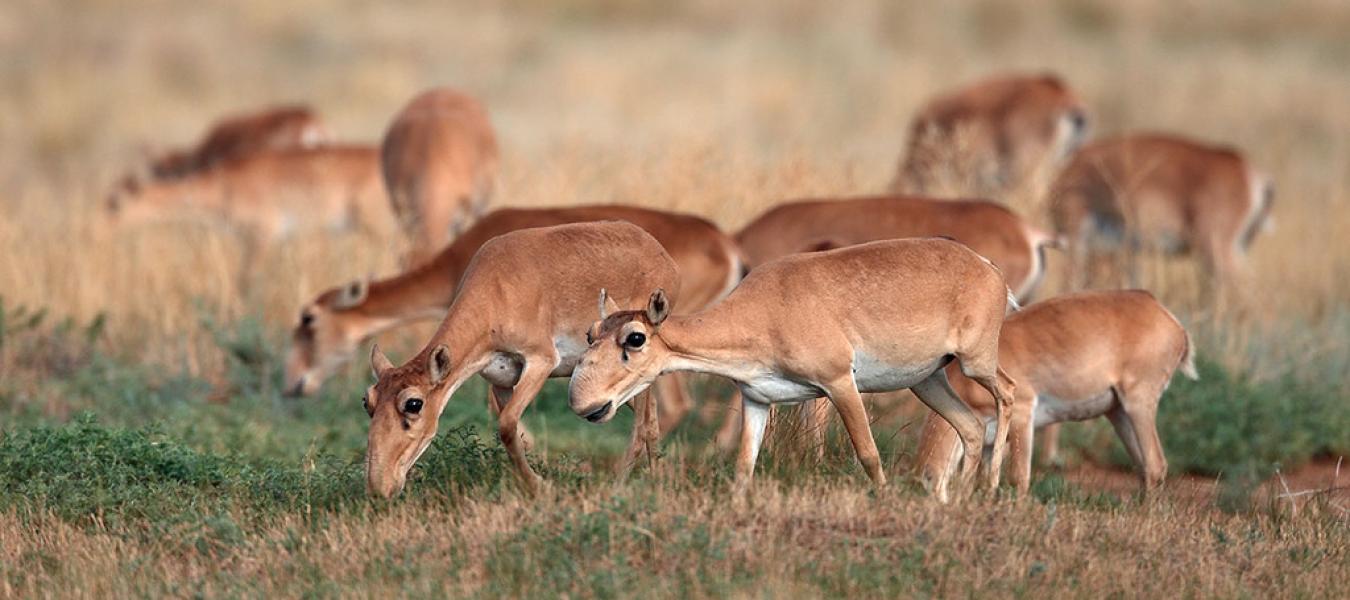Dramatic declines in saiga antelope populations

We present new data on the size of all the saiga antelope populations; three populations of the subspecies Saiga tatarica tatarica in Kazakhstan, one of S. t. tatarica in Kalmykia, Russia, and two of S. t. mongolica in Mongolia. The data suggest that three populations are under severe threat from poaching and have been declining at an increasing rate for the last 2±3 years.
The Ustiurt population in Kazakhstan was relatively secure but is now also under threat. There is evidence of much reduced conception rates in Kalmykia, probably because of selective hunting of adult males. The Mongolian subspecies shows no evidence of recent decline, but is of concern because of the population's small size. The cause of the population declines appears to be poaching for meat and horns, which is a result of economic collapse in the rural areas of Kazakhstan and Kalmykia. Saiga horns are also known as ling yang (羚羊) and used in Traditional Chinese Medicine. We suggest that full aerial surveys be carried out on the Betpak-dala (Kazakhstan) and Mongolian populations, and that funding is urgently required for the control of poaching in all parts of the saiga range.
